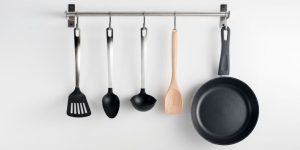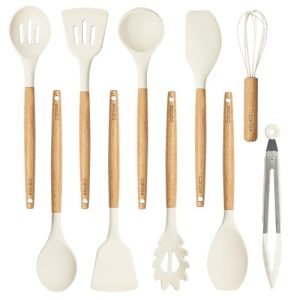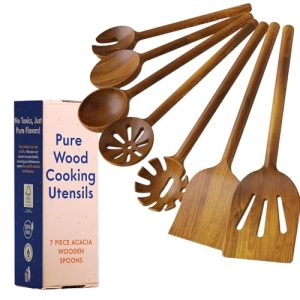Have you ever found yourself confused in the kitchen, wondering whether to mince or chop your ingredients? The difference might seem small, but it can change the texture, flavor, and even the cooking time of your dish.
Knowing exactly when and how to mince versus chop can take your cooking from good to amazing. You’ll discover clear, simple explanations that will help you master these basic but essential skills. By the end, you’ll feel confident making the right choice every time you cook.
Ready to sharpen your kitchen know-how? Let’s dive in!
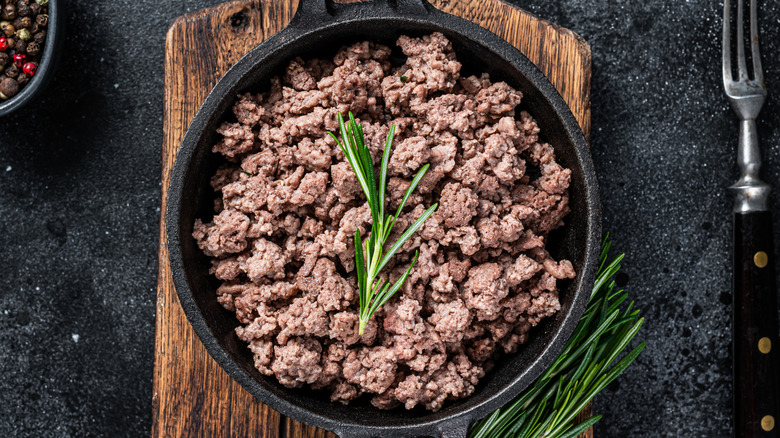
Credit: www.thetakeout.com
Minced Vs Chopped Basics
Understanding the basics of minced and chopped ingredients helps in cooking with precision. Both techniques prepare food differently and affect taste and texture. Knowing their distinctions improves recipe results and kitchen skills.
Defining Minced
Minced means cutting food into very small pieces. The pieces are almost uniform in size. Minced ingredients blend well into dishes. Garlic and onions are often minced to release more flavor.
Defining Chopped
Chopped means cutting food into larger, irregular pieces. The size varies but pieces are bigger than minced. Chopped vegetables keep some texture and crunch. They add visual appeal and body to a dish.
Textural Differences
Minced food feels finer and softer in the mouth. It melts into sauces and spreads flavor evenly. Chopped food has a coarser texture. It provides bite and a rustic feel to meals.

Credit: www.hungryhuy.com
Tools For Mincing And Chopping
Choosing the right tools makes mincing and chopping easier and safer. Different tools create different textures, which affect your dish’s flavor and appearance. Understanding these tools helps you pick the best one for each task.
Knives And Blades
Knives are the most common tools for both mincing and chopping. A sharp chef’s knife works well for chopping vegetables into larger pieces. For mincing, a smaller paring knife or a mezzaluna blade helps cut ingredients into fine bits. Using a dull knife makes cutting harder and less precise. Always keep blades sharp for clean cuts and better control.
Food Processors And Gadgets
Food processors speed up mincing and chopping. They save time when handling large amounts. Use the chopping blade for rough cuts and the mincing blade for finer textures. Some gadgets like garlic presses or herb choppers work well for small, quick tasks. These tools reduce effort and give consistent results every time.
Techniques To Achieve Each Cut
Understanding the technique of cutting can enhance your cooking skills. Minced and chopped are two different cuts that affect texture and flavor. Let’s explore how to achieve each one precisely.
Step-by-step Mincing
Mincing creates very small, uniform pieces. It is perfect for garlic and herbs. Follow these steps:
- Start with a sharp knife for precision.
- Place your ingredient on a stable cutting board.
- Hold the knife with a firm grip.
- Make thin slices across the ingredient.
- Gather the slices together.
- Rock the knife back and forth to mince.
- Repeat until the pieces are tiny and uniform.
Step-by-step Chopping
Chopping produces larger, rough pieces, often used for vegetables. Here’s how to chop effectively:
- Ensure your knife is sharp for clean cuts.
- Place the vegetable on a flat surface.
- Cut the vegetable into halves or quarters.
- Hold the knife steady with one hand.
- Use your other hand to guide the vegetable.
- Make even cuts along the length.
- Rotate and cut across for even chunks.
Both techniques require practice for skill development. Use these steps to create precise cuts.
Impact On Cooking And Flavor
The way you cut your ingredients—minced or chopped—has a clear impact on both cooking and flavor. These differences affect not only how fast your dish cooks but also how flavors develop and blend together. Understanding these effects can help you decide the best cut for your recipe and desired taste.
Flavor Release And Texture
Minced ingredients release more flavor because they have a larger surface area exposed to heat and other ingredients. This means the taste becomes more intense and evenly distributed in your dish.
Chopped pieces, being larger, retain more of their original texture and provide distinct bites. This can add a pleasing contrast, especially in salads or chunky sauces.
Think about the last time you added minced garlic versus chopped garlic—did you notice a difference in how strong the garlic flavor was? That’s the flavor release at work.
Cooking Time Differences
Minced ingredients cook much faster than chopped ones. Their small size allows heat to penetrate quickly, which speeds up softening and flavor extraction.
Chopped ingredients take longer to cook through and can hold their shape better during longer cooking times. This makes them ideal for stews or dishes where texture matters.
Next time you’re in a hurry, try mincing onions for your stir-fry; you’ll see how it speeds up cooking without losing flavor.
When To Use Minced Or Chopped
Knowing when to use minced or chopped ingredients can change the texture and flavor of your dishes significantly. Both techniques alter the size and surface area of the ingredients, affecting how they cook and blend with other flavors. Choosing the right cut depends on the recipe’s cooking time, texture preference, and the intensity of flavor you want to achieve.
Recipes Suited For Minced Ingredients
Minced ingredients are perfect when you want flavors to meld seamlessly into a dish. Because minced pieces are very small, they release more flavor quickly and evenly.
- Sauces like marinara or pesto rely on minced garlic and herbs to infuse the dish deeply.
- Stuffings and meatballs benefit from minced onions and garlic, which mix well without noticeable chunks.
- Spicy dishes like chili or curry often use minced chilies for an even heat distribution.
Think about dishes where you don’t want to bite into large pieces but still need those flavors to shine. Minced ingredients work well in recipes that cook quickly or require a smooth texture.
Recipes Suited For Chopped Ingredients
Chopped ingredients provide texture and visual appeal to your dish. They hold their shape better during cooking and add a satisfying bite.
- Salads and salsas benefit from chopped vegetables for a fresh, crunchy texture.
- Soups and stews often call for chopped onions, carrots, and celery to maintain a hearty bite.
- Roasted dishes use chopped herbs and vegetables to create layers of texture and flavor.
Ask yourself if your dish needs distinct pieces that stand out or if it’s better for flavors to blend completely. Chopped ingredients are your go-to when you want texture and a less intense, slower flavor release.
Common Ingredient Examples
Understanding the difference between minced and chopped ingredients is easier when you look at common examples. The size and texture you choose can change the flavor and appearance of your dish significantly. Let’s look closely at how this applies to everyday kitchen staples.
Garlic And Onions
Garlic and onions often set the foundation for many recipes. When you mince garlic, you create tiny pieces that release more flavor and aroma quickly. This is perfect for dishes where you want a strong garlic taste without large chunks.
On the other hand, chopped onionsare usually cut into larger pieces, giving texture and mild bursts of flavor. If you want your onions to soften and blend into a sauce, chopping works well. But if you want a strong, even flavor, mincing is the way to go.
Herbs And Vegetables
Herbs like parsley or cilantro behave differently when minced or chopped. Mincing herbs produces a finer texture, which helps distribute their flavor evenly throughout your dish. This is especially useful in dressings or sauces.
Vegetables such as carrots or bell peppers show clear texture differences when chopped versus minced. Chopping creates noticeable pieces that add crunch and visual appeal. Mincing these vegetables is less common but useful when you want them to melt into the dish, such as in meatloaf or stuffing.
Think about the last time you cooked—did the size of your ingredient pieces change the final taste or texture? Experimenting with mincing and chopping can give you better control over how your dishes turn out.
Avoiding Common Mistakes
Avoiding common mistakes in mincing and chopping helps keep your dishes consistent and tasty. Small errors can change the texture and flavor of your meals. Understanding these mistakes improves your cooking skills quickly.
Over-mincing And Its Effects
Over-mincing can turn ingredients into a paste. This changes the texture, making it mushy. It also releases too much juice or oil. Over-minced garlic or herbs lose their fresh taste. The dish may become too strong or bitter. Keep your mincing fine but controlled for best results.
Chopping Inconsistencies
Chopping inconsistently causes uneven cooking. Small pieces cook faster than large ones. This can lead to some parts burning while others stay raw. Uneven chopping also affects the presentation. Aim for uniform pieces to ensure even cooking and a neat look. Use a sharp knife and steady hand for better control.
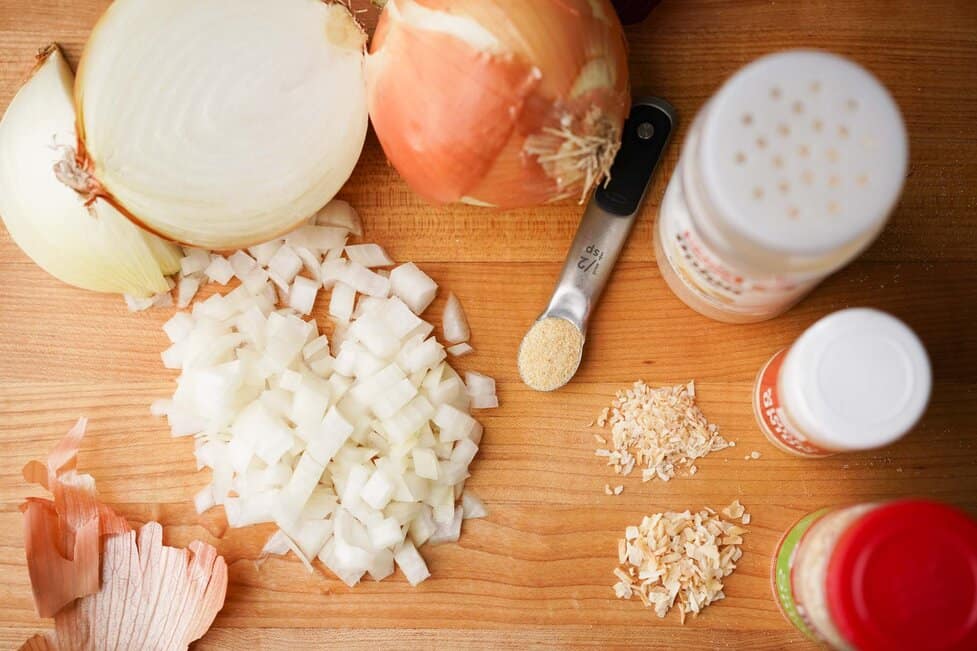
Credit: www.hungryhuy.com
Frequently Asked Questions
What Is The Main Difference Between Minced And Chopped?
Minced means cutting food into very tiny pieces, almost paste-like. Chopped involves larger, rough pieces. Minced is finer, used for blending flavors. Chopped is chunkier, retaining texture in dishes.
How Does Minced Differ From Chopped In Cooking?
Minced ingredients cook faster due to smaller size. Chopped pieces take longer, offering more bite. Minced is ideal for sauces and spreads. Chopped suits stews and salads where texture matters.
Which Is Better: Minced Or Chopped Garlic?
Minced garlic releases stronger flavor quickly. Chopped garlic provides milder, chunkier taste. Use minced for intense garlic flavor in sauces. Use chopped to add texture and subtle aroma.
Can Minced And Chopped Be Used Interchangeably?
They are not always interchangeable. Minced is finer, blends smoothly. Chopped adds texture and bite. Substituting affects dish texture and cooking time. Choose based on desired flavor and texture.
Conclusion
Minced and chopped differ in size and texture. Minced is very fine, while chopped is chunkier. Each works best for different recipes and flavors. Knowing this helps you cook with more care and taste. Choose based on your dish’s needs and cooking time.
Simple steps lead to better meals every time. Cooking becomes easier when you understand these basic cuts. Try both to see how they change your food. Small details make a big difference in cooking.

Hi, I’m Daniel Brooks—a food lover and kitchen gear enthusiast. I enjoy testing cookware, utensils, and gadgets to see what really works in everyday cooking. At PlugChef.com, I share honest reviews, comparisons, and simple guides to help you choose the best tools for a safer, smarter, and more enjoyable kitchen.








